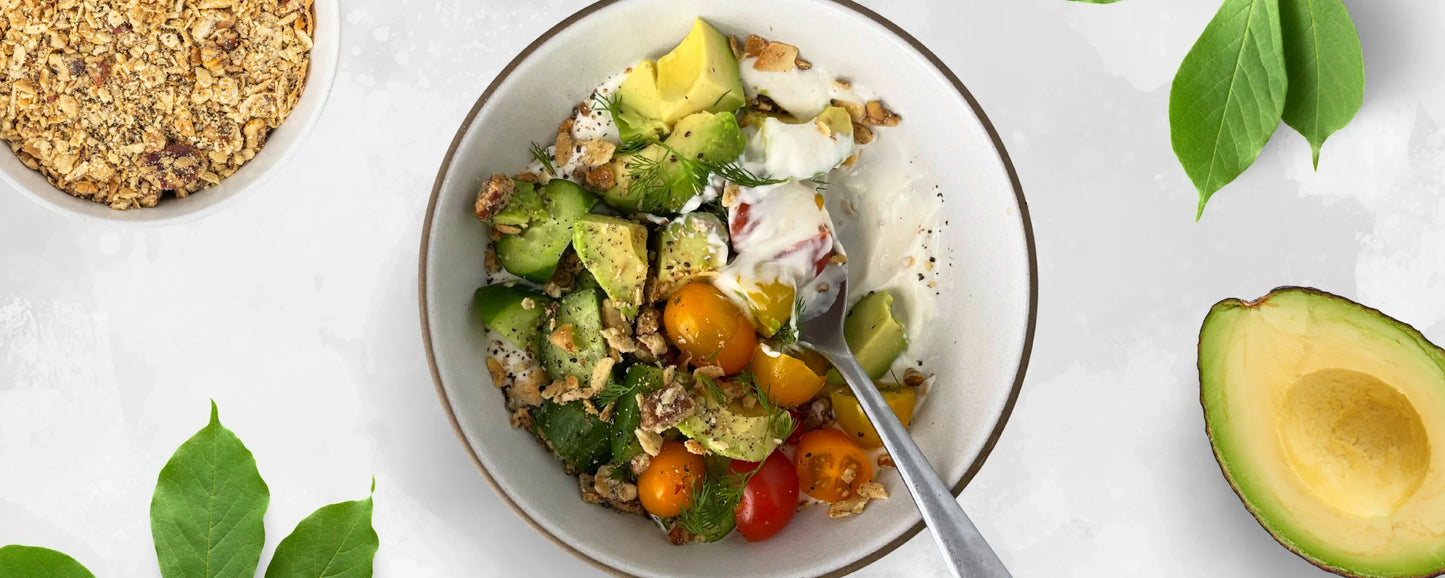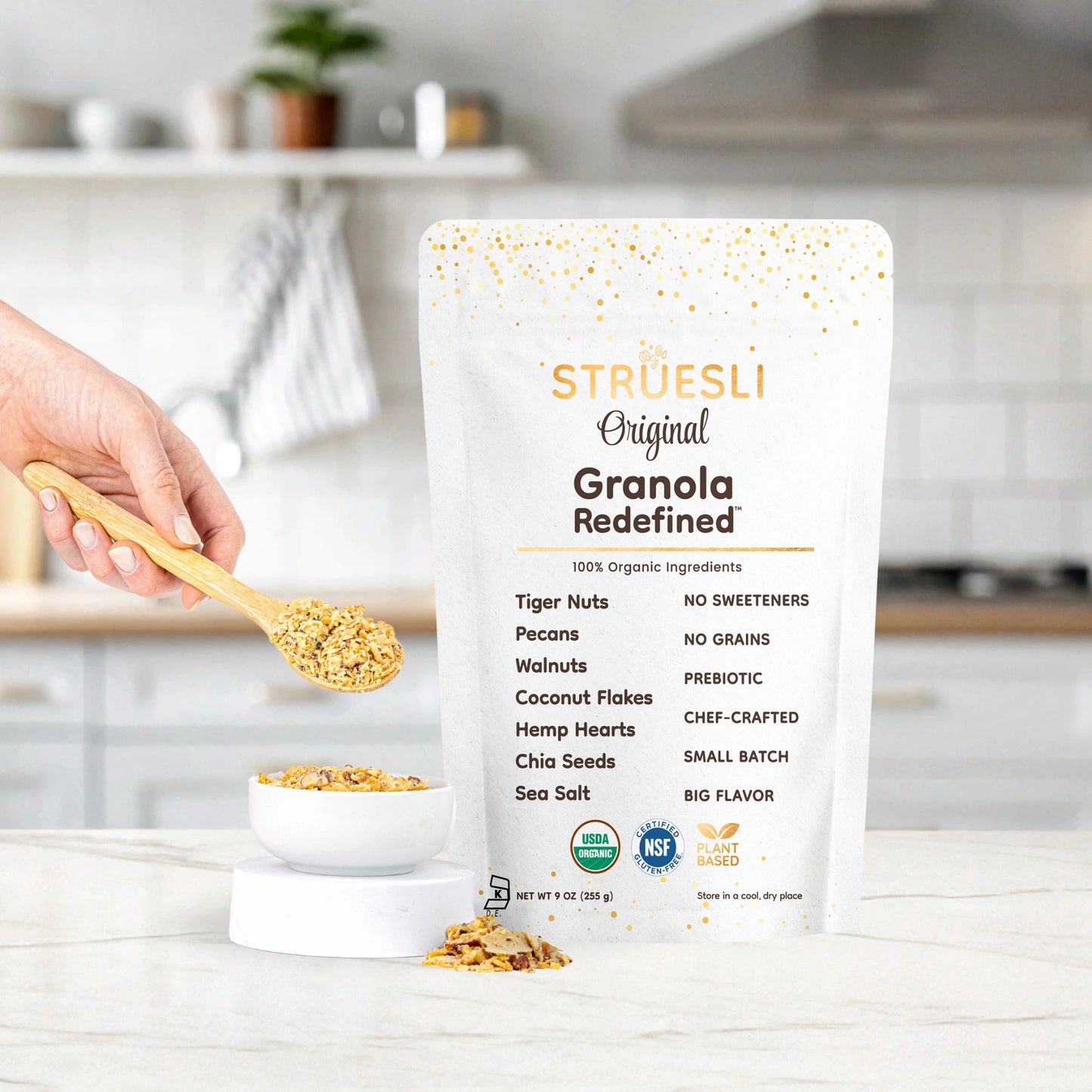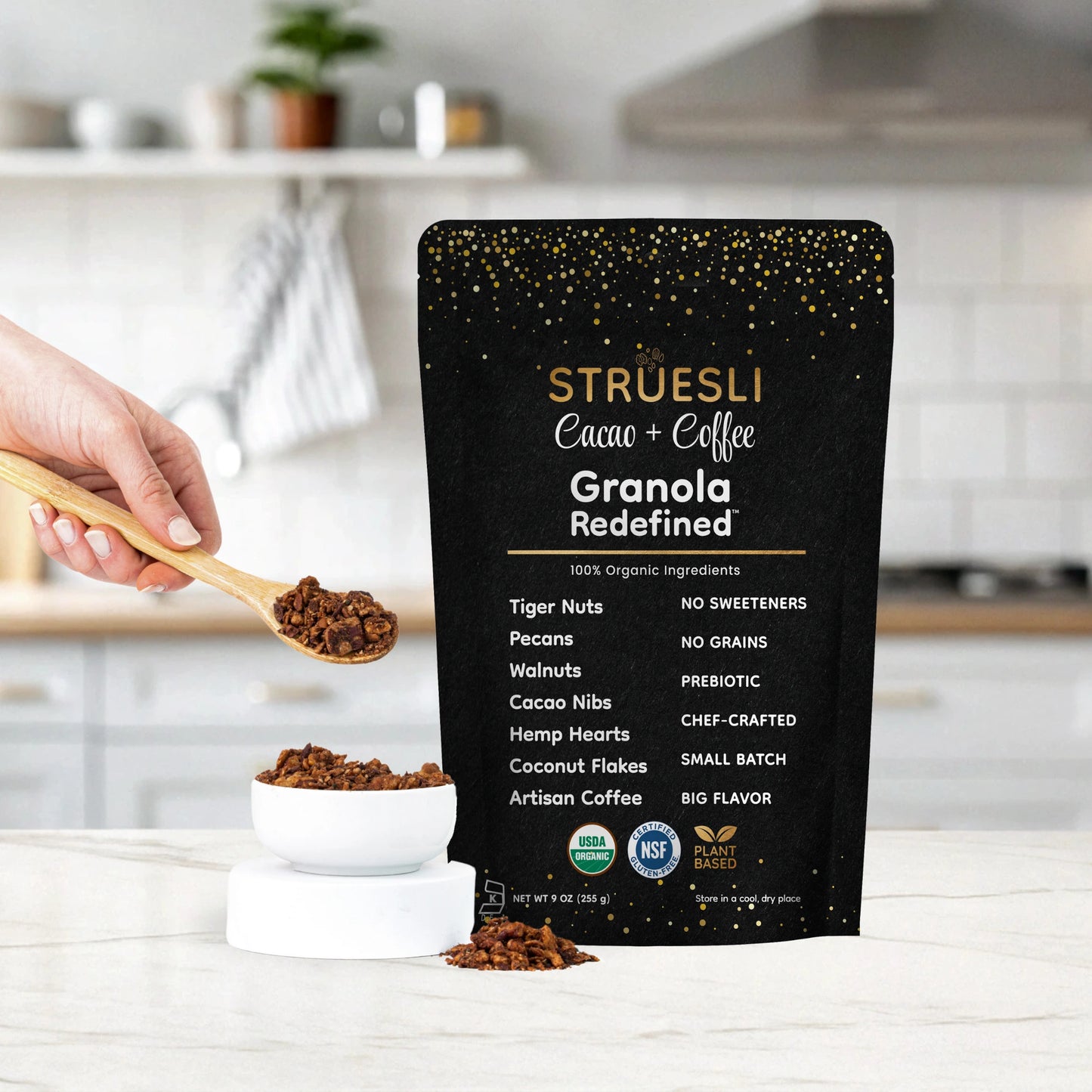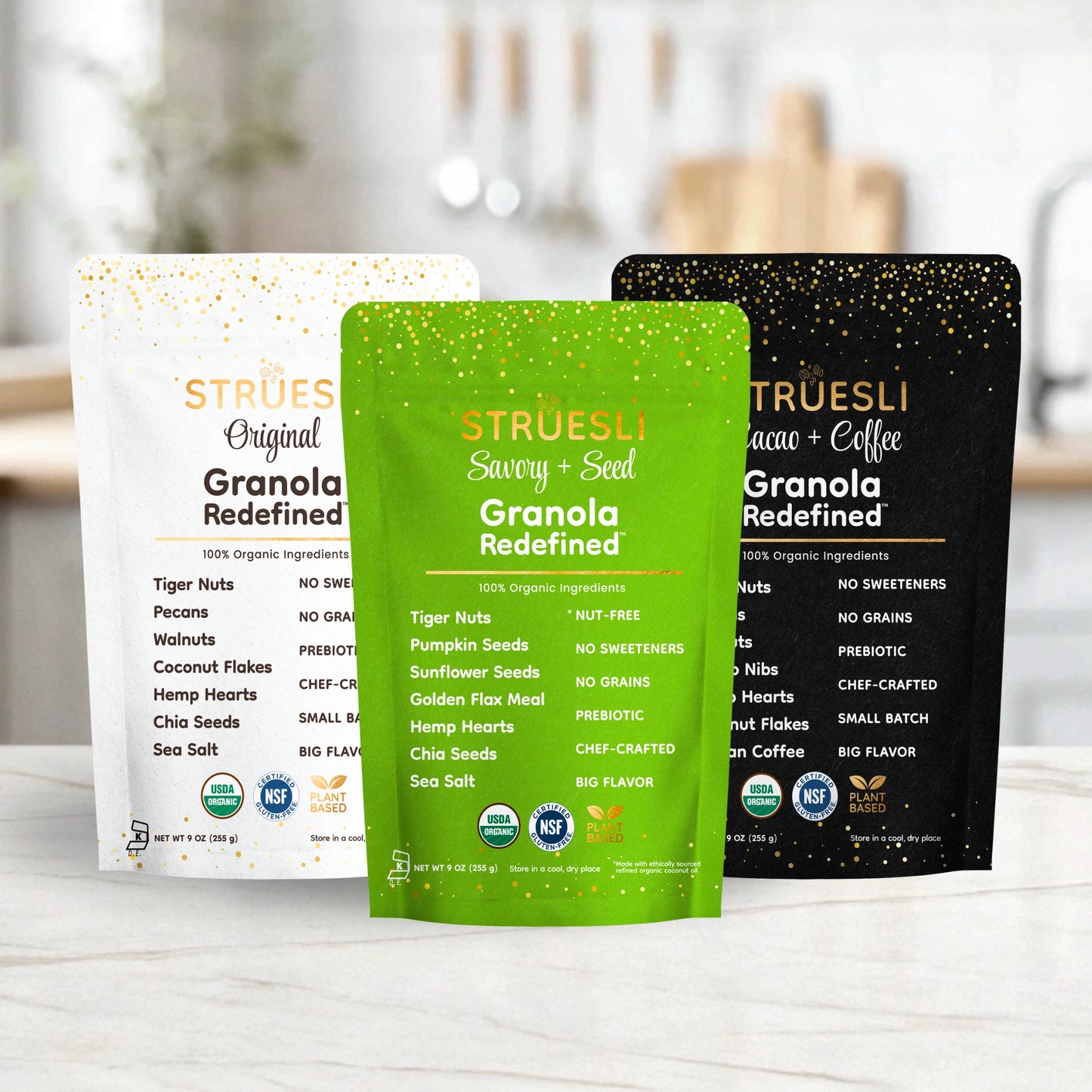
Nearly all Americans (93%) eat the recommended amount of grains in a day, but very few of them meet the MyPlate recommendation for at least half those grains to be whole grains. That means far too many of the grains in the standard American diet are highly processed grains in the form of flours or rice and corn byproducts stripped of many of their original nutrients. And not enough of the grains are whole grains, which are sources of fiber, B vitamins, vitamin E, and essential minerals.
On the other hand, avoiding grains completely — whether due to a food allergy, autoimmune condition, or diet strategy — is a special diet that’s rising in popularity, which many attribute to the rise in gluten-free eating as well as Paleo and Whole30 movements at the same time.
Along with the rise in gluten-free and grain-free eating are more food products designed without grains. While some grain-free foods are designed with nutrition in mind, such as Struesli Granola Redefined, not all grain-free foods offer good nutrition. That’s why it’s important to choose foods wisely when eating a grain-free diet, and to incorporate as many whole foods as possible.
What Does It Mean To Be Grain Free?
Grain-free eating means an eating plan that doesn’t contain grains or foods and drinks made with grain-derived ingredients. Those are:
- Wheat (including wheat flour, white flour, semolina flour, as well as products like bread, pasta, cereal, flour tortillas, beer, and pastries made from wheat flours)
- Oats (including oat flour, oat milk, and oatmeal)
- Rice (includes brown rice, wild rice, white rice, and black rice, as well as products made from rice)
- Corn (includes cornmeal as well as products made from corn, including corn tortillas, polenta, grits, and popcorn)
- Barley (includes barley flour and barley malt used to make beer and liquor)
- Millet
- Buckwheat
- Quinoa
- Sorghum
- Amaranth
- Farro
- Spelt
Why Avoid Grains?
The four most common reasons someone may choose or need to to avoid grains are:
- An autoimmune condition. Celiac disease, non-celiac gluten sensitivity, microscopic colitis, and dermatitis are autoimmune conditions where flare ups (or an inflammatory response) after ingesting grains can result in digestive distress, skin rashes, or other health issues. Other chronic conditions, such as migraines or arthritis, may be exacerbated in some people by eating grains.
- An allergy or intolerance to wheat, corn, or other grains. And though not all grains contain gluten, some people with celiac disease or a gluten intolerance also choose to avoid grains altogether.
- Blood sugar control. Since most of the grains consumed in a standard American diet are refined grains that offer little fiber and are often paired with sugar (think white bread, pasta, pastries, and cereals), they can cause blood sugar spikes, which wreak havoc on the body overtime and can lead to prediabetes, type 2 diabetes, or metabolic syndrome. Therefore people who are trying to balance blood sugar will sometimes adopt a grain-free diet.
- Weight loss diets. For the same reason listed above – that the grain-containing foods that are consumed the most are not typically nutritionally well-rounded – some people cut them out of their diets as a weight-loss strategy. Avoiding grains is also part of keto, Paleo, Whole30, and some elimination diet plans.
Making Grain Free A Healthy Choice
But going on a grain-free diet isn’t a simple act that always results in better health. Not only are grain-free diets hard to follow, since grain-based foods are so ubiquitous, but they don’t necessarily offer better health as a whole.
Grain-based foods, especially whole grains, offer a significant source of important fiber, as well as B vitamins and antioxidants. They’ve also been a source of important nutrient fortification, sometimes offering the only source of folate, iron, and zinc for malnourished kids and adults (think fortified bread and cereal).
Grain-free product innovations, on the other hand, while being void of grains, haven’t necessarily offered a suite of nutritional benefits. Grain-free energy bars, for example, may be nothing more than processed isolates, sugar alcohols, and cheap oils. Grain-free cereals may be higher in added sugars than traditional versions. Grain-free breads may offer little to no fiber in exchange for a lot of sodium and saturated fat.
That’s not to say that grain-free packaged foods can’t also offer some nutrition. It’s just that, until recently, the priority has been to remove grains, and not necessarily to offer benefits beyond that.
Struesli: Granola That’s Beyond Grain Free
Struesli is a delicious light and crispy granola that is grain free … and so much more! Instead of being based on oats, like most granolas, Struesli is made from a base of tiger nuts, a nutritious root vegetable that offers prebiotic fiber, plus monounsaturated fats, and heart-healthy minerals.
When you choose Struesli to top your yogurt, salad, and cottage cheese bowl (or so many other uses), you’re not only getting a grain-free granola with delicious taste, you’re also getting the benefits of a granola that is created with health in mind. Struesli has:
- No added sugars or sweeteners of any kind
- Lots of natural heart healthy fiber
- A variety of antioxidant-rich plant-based foods
- 100% good-for-you plant-based fats
- Zero grains, fillers, or preservatives
- A base of all natural whole foods, including nuts, seeds, coconut, and tiger nuts
- Versatility - it can be used in both sweet and savory ways
Here at Struesli we say it’s time to think beyond grain free. If you’re looking to incorporate more nutritious grain-free foods into your day, don’t settle for less than the best. Struesli offers a granola that works for a variety of special diets, including grain-free eating, while also offering something that tastes delicious and provides important nutrients at the same time.
Try Struesli Grain-Free Granola
Written by Jessie Shafer, RD
August 26, 2025




